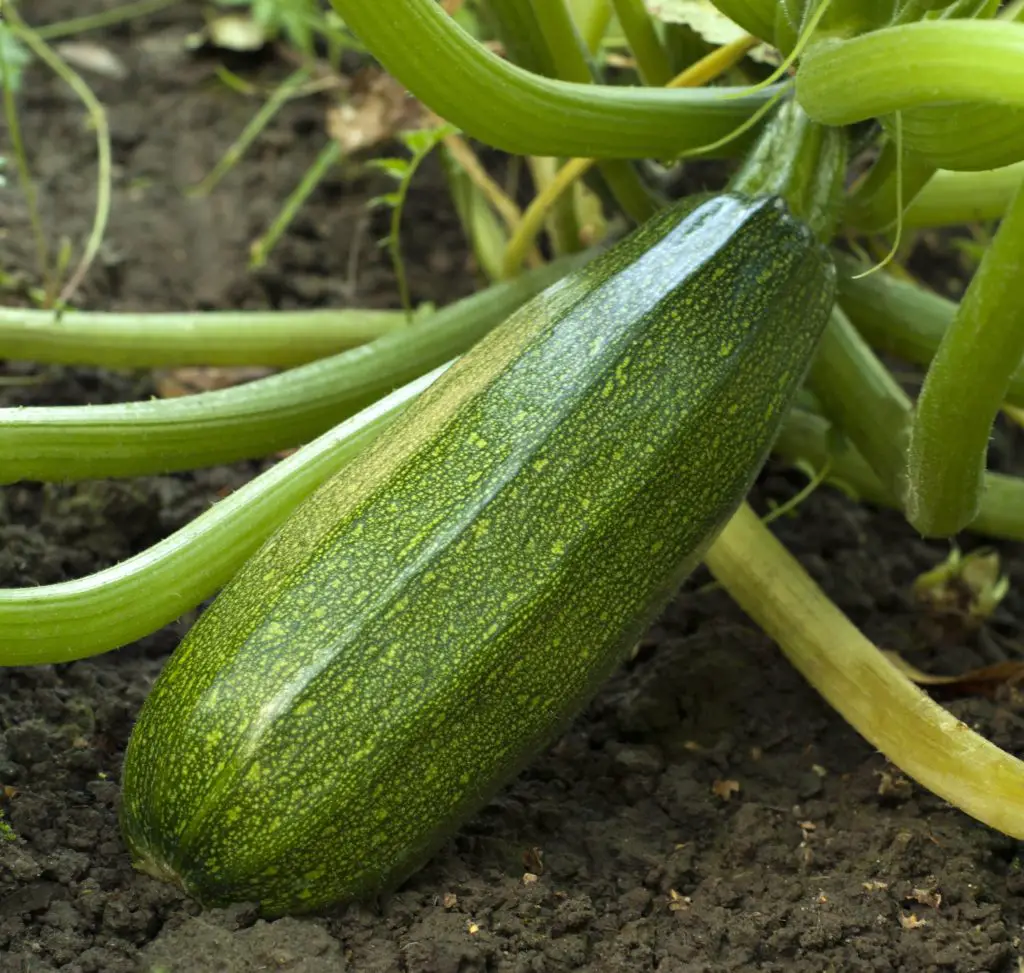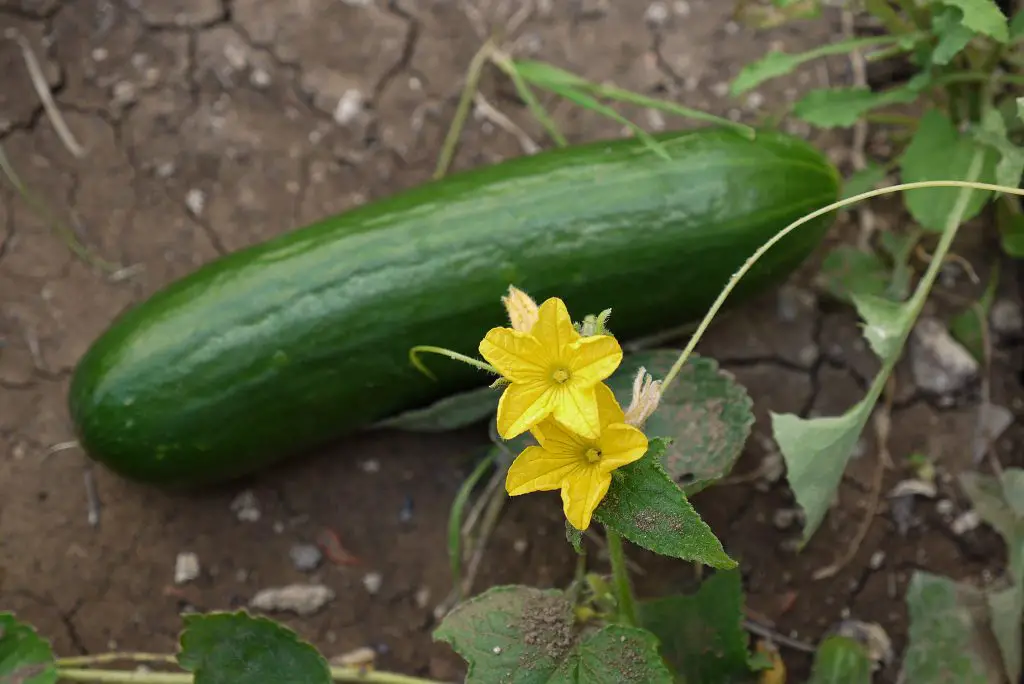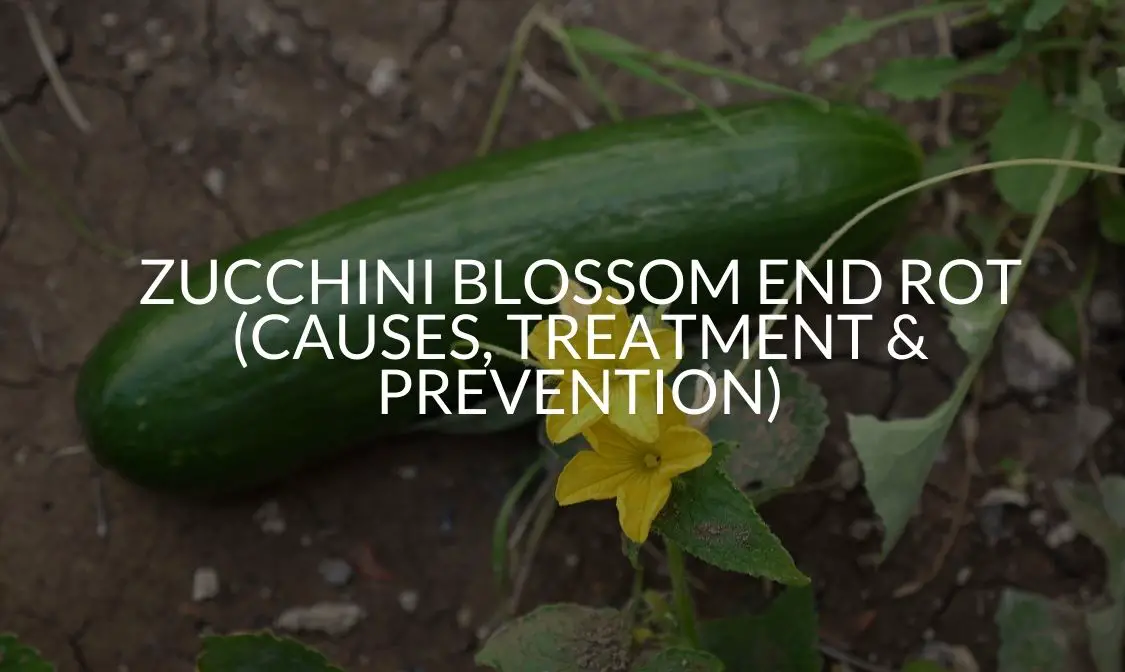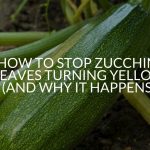With their bright yellow flowers, zucchinis may be one of the prettiest types of summer squash. That is, until their petals wilt and crumble as they suffer from blossom end rot! It is not just appearance either, their taste and even their smell are totally lacking too!
If your zucchinis are developing devastating sores at their base or their beautiful blossoms refuse to bud, that means it is suffering from calcium deficiency or inconsistent watering! Zucchini blossom end rot can be avoided easily by watering your garden more consistently and paying attention to your soil’s calcium absorption.
All gardeners experience zucchini end rot at one time or another! Although your gardening mishap is not inedible, it is 100% avoidable and there is no need to be a green thumb to fix this problem, either! Continue reading for more on how to avoid one of the number one zucchini gardening mistakes!
What Causes Zucchini Blossom End Rot?
If you have noticed tiny water-soaked spots at the bottom of your zucchinis, it is likely your plants are experiencing zucchini blossom end rot. Zucchini end rot has many causes including root damage, calcium deficiency, and lack of consistent watering!
Soil Has A Calcium Deficiency
Calcium is what helps your zucchini grow! So, when they do not receive the proper calcium they need, the beautiful blossom at the end begins to wilt and decay.
Decay at the ends or the explicit inability to blossom is a clear sign that your zucchini has end rot! You might even notice that your zucchini does not even make it to the blossoming stage or that the base of the zucchini may have endured end rot.
Calcium deficiency means your zucchinis are not receiving the proper amount of calcium they need to thrive. It happens because of uneven watering, improper fertilization, overfertilization, and much more.
Soil Has Improper pH Level
Before planting this batch of zucchinis did you consider your soil’s potential of hydrogen (pH) level? Having improper pH levels in your soil can be disastrous because the pH level of your soil determines the availability of nutrients for your Zucchinis.
Zucchinis should have a pH level of around 6.5 which will allow them to grow in an acidic environment and retain the nutrients they need to thrive like potassium, phosphorus, magnesium, and much more!
You can easily adjust the level of pH in your soil by using lime or a commercial pH additive. If you decide to use a commercial fertilizer or gardening supplement, you should always adhere to the instructions carefully!
Zucchinis Have Root Damage
Root damage can happen for a variety of reasons. One of the main reasons that zucchinis suffer root damage is because of their deep love for the water.
Because zucchinis require deep saturation, one common cause of root damage happens when roots become overly saturated. When zucchinis are planted in soil that retains too much moisture, this tends to rot the zucchini’s roots.
This rotting is devastating for your zucchini and not only results in zucchini blossom end rot but is essentially fatal for your zucchini since it often leaves your squash prone to numerous insects and pests!
Another form of root damage can happen when gardeners try planting their zucchinis in small spaces! Zucchinis need space to grow since their roots spread and therefore planting them in small spaces can prevent maturing.
In all cases, root damage is catastrophic. If you notice a targeted instance of zucchini blossom end rot, this might be a sign that there is some sort of root damage going on. Check to see if the size of your garden is adequate (at least 4 square feet).

How Do You Treat Zucchini Blossom End Rot?
Unfortunately, if you are looking for a way to reverse magically make your end rot disappear, that is not going to happen. You cannot reverse the effects of zucchini blossom end rot. However, you can stop them from spreading.
Luckily, there are plenty of ways to treat zucchini end rot and get your zucchini blossoms budding again in no time! From commercially bought sprays all the way to selecting your gardening soil more wisely, check out these tips on how you can take hold of your garden and get rid of the end rot!
Remove the Rotted Zucchini
End rot can spread rapidly throughout your garden which is why some gardeners will refer to this annoying water spot as an infectious disease. To protect the rest of your garden, remove all zucchinis that have been infected with blossom end rot (no matter how severe or little they have been harmed).
Add Mulch to your Garden
Mulch helps trap moisture in your soil. If your zucchinis are having a difficult time retaining moisture or seem to be soaking up water unevenly, try adding a layer of mulch to the base of your zucchini plants.
The layer of mulch at the bottom of your plants will prevent moisture from escaping!
Use A Rot Treatment Spray
Rot treatments help stop the rot in its tracks and prevent it from spreading to other zucchinis. Unfortunately, it cannot reverse the damage that the rot has already done but these sprays make it possible to move forward without further damage.
Most rot repellents come in convenient spray bottles and can be absorbed by plants almost instantly. You may also find different powdered supplements and treatments that do similar things.
Moisten The Soil
If your zucchini is suffering from end rot, that is an indicator that your soil is too dry! After removing all infected squashes, start a constant irrigation flow to begin a rehydration process for your thirsty zucchinis. Be careful not to drown them, though since this can cause their roots to rot.
Giving your zucchinis a proper balance of water and sunlight (at least 6 hours of direct sunlight per day) is important to their growth. So, pay attention to the amount of water you give your zucchinis.
How Can You Prevent Zucchini Blossom End Rot?
It can be devastating to see your delicious fruits begin to take on dark, cankerous water splotches. One day they are healthy, and the next they appear to be dying!
Worry not, the causes of end rot can be prevented with proper garden maintenance! All you need to do is be a proactive gardener!
Choose Your Soil Wisely
Zucchinis will thrive in the right conditions and fail in others! To find them the moisture retaining, nutrient-rich soil they desire, choosing good soil for your zucchini is important!
When choosing soil, you should always test to confirm whether the calcium levels are sustainable for your zucchinis! Calcium is one of the most important parts in the formation of your zucchini plant. Without calcium, your plant may grow deficient and be unable to blossom or form itself fully!
If the nitrogen levels are too high the soil is not a good option for your zesty zucchinis! Nitrogen is retroactive to calcium so it is likely that a nitrogen-rich soil will cause zucchini blossom end rot! You can use additives; however, it is not always guaranteed they will work!
Acidic soil is great for growing zucchinis because of the benefits that can be received from them like decreased stress on roots which helps the flow of nutrients from root to zucchini blossom! However, overly acidic (more alkaline) soil can deplete nutrients from your zucchini. Pay attention to pH level for the best zucchinis!
Maintain Consistent Moisture Levels in Soil
Zucchinis need consistent moisture to achieve best growth! That means giving every plant an equal amount of water, staying consistent with your zucchini plants’ watering schedule, and having soil that can retain the right amount of moisture.
This is because fluctuations in moisture level can limit a plant’s ability to absorb calcium. Maintaining consistent moisture levels is crucial if you want to prevent zucchini blossom end rot.
Although care is relatively straightforward, the slightest mis-watering can result in blossom end rot which is why paying close attention to your zucchini’s watering routine is very important to the health of your plant.
Zucchini should be watered deeply roughly once a week or every time you notice that the soil has become completely dry. That is a clear sign that your zucchini has soaked up all its moisture and is thirsty for more!
Avoid Using Nitrogen-heavy Fertilizer
If you decide to use a nitrogen-heavy fertilizer on your succulent green fruits, your poor zucchinis will be deprived of the one thing they need to grow big and strong: calcium! This is because nitrogen loves to deplete the calcium from your soil so avoiding nitrogen heavy fertilizer is one of the best ways to help your zucchinis steer clear from any potential calcium deficiencies.
Instead of purchasing nitrogen-heavy fertilizers which can deplete the moisture from the soil, use water-soluble fertilizers that encourage root soaking! A water-soluble fertilizer with a heathy balance of nitrogen, phosphorus, and potassium is the best way to grow healthy fruits like the squash zucchini!
Use Mulch
Since soil is essentially the most important part of growing healthy fruit, using mulch guarantees your soil will retain moisture. Placing mulch on top of your already moisture-rich soil will help prevent evaporation so your soil stays moist, and your plants can retain as much moisture as possible!
Mulch is affordable and can be found at any gardening or home supply store

FAQ
Can You Eat Zucchini with Blossom End Rot?
A zucchini with end rot can still be eaten, however, it is certainly not going to taste as good as a zucchini without. This is because the zucchini with end rot did reach proper maturity and therefore did not receive the proper amount of nutrients it needed to taste its best.
Despite its eyesore of an appearance (and its dreadful name), zucchini blossom end rot does not make the rest of your zucchini bad. So, just cut off the part of your zucchini which has been damaged by end rot and feel free to enjoy the rest of it!
Always use best discretion when deciding whether to eat your zucchini or not. If the coloration of your zucchini is faded compared to the rest of your harvest or the inside of your zucchini is exceedingly mushy, this is a sign that your zucchini is should not be eaten.
Can Blossom End Rot Be Reversed?
Unfortunately, there is no cure for end rot and it cannot be reversed but you can prevent zucchini blossom end rot from spreading to your other zucchinis by removing the rotted zucchinis from your garden!
Zucchinis have a great ability to bounce back and if you can catch the blossom end rot before it begins to hit the whole garden, you will be fine! Remember, just because you have removed the zucchinis from your garden does not mean the problem is fixed. You need to address the issue and take proper precautions!
Recap
At first, zucchini blossom end rot can seem like the end of the world –and the end of your garden! Mainly because this little foliage faux pas is not just a bad look, it can spread to your whole garden if you do not nip it in the bud immediately.
Worry not, blossom end rot is not the end of the world and does not mean your plant is inedible but it does mean that it can spread to the rest of your veggies so you should take care of it quickly. End rot can even be prevented using several methods like maintaining consistent moisture levels and avoiding overfertilizing.
If you notice wilting and decay in your zucchini blossoms, this is a sign that your zucchini is not getting a proper amount of water. It might be your watering techniques, but it can also be the soil you have planted your zucchini in. For the best results, use fertilizers that are best suited for your zucchini and have a plan even before you plant them!





